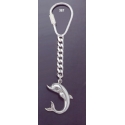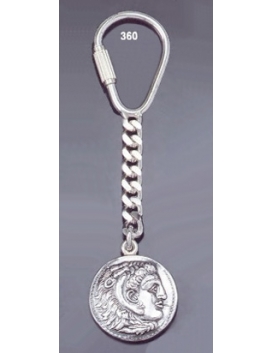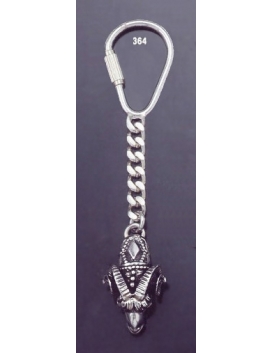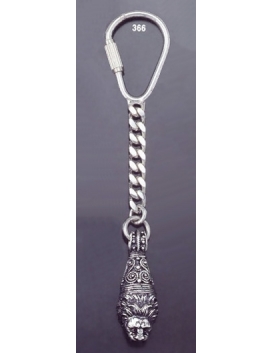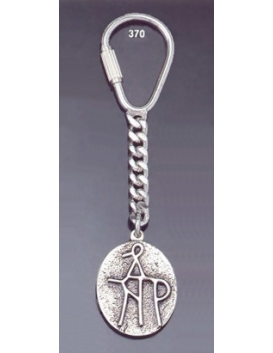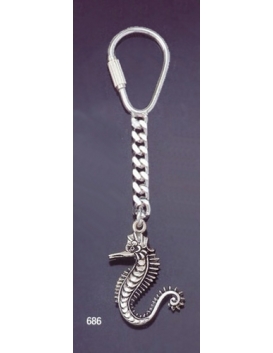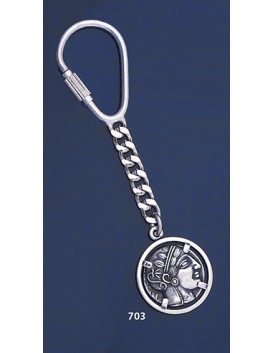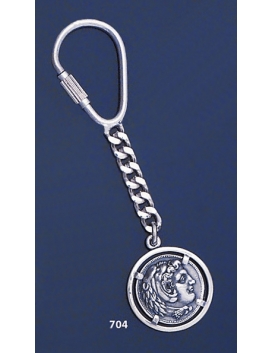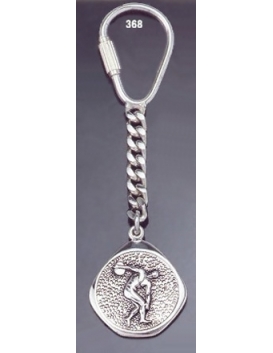368 Silver Keyring with Discobolus of Myron / Discus Thrower / Diskobolos coin relief
Collectible Silver Keyring with Discobolus of Myron / Discus Thrower / Diskobolos coin relief
Payment Methods

Coin depicting:
The Discobolus of Myron ("discus thrower" Greek Δισκοβόλος, "Diskobolos") is a famous lost Greek bronze original statue that was completed towards the end of the Severe period, circa 460-450 BC. It is known through numerous Roman copies, both full-scale ones in marble, such as the first to be recovered, the Palombara Discopolus, or smaller scaled versions in bronze. A discus thrower is depicted about to release his throw. The moment captured in the statue is an example of rhythmos, harmony and balance. Myron is often credited with being the first sculptor to master this style. Naturally, as always in Greek athletics, the Discobolus is completely nude. His pose is said to be unnatural to a human, and today considered a rather inefficient way to throw the discus. Also there is very little emotion shown in the discus thrower's face. The other trademark of Myron embodied in this sculpture is how well the body is proportioned, the symmetria.
The potential energy expressed in this sculpture's tightly-wound pose, expressing the moment of stasis just before the release, is an example of the advancement of Classical sculpture from Archaic. This was a classical greek athletic sport, included in the ancient olympic games that took place at Olympia, Greece.
The Ancient Olympic Games (Greek: Ολυμπιακοί Αγώνες; Olympiakoi Agones) were a series of athletic competitions held for representatives of various city-states of Ancient Greece. Records indicate that they began in 776 BC in Olympia, Greece. They were celebrated until 393 AD. The Games were usually held every four years, or olympiad, as the unit of time came to be known.The prizes for the victors were laurel wreaths, palm branches, woolen ribbons and sometimes even food for life. The ancient Olympics were rather different from the modern Games. There were fewer events, and only free men who spoke Greek could compete (even though a woman is also mentioned as a winner).The Games were always held at Olympia instead of moving around to different places at each separate Olympic event as is the case for modern Olympics.




